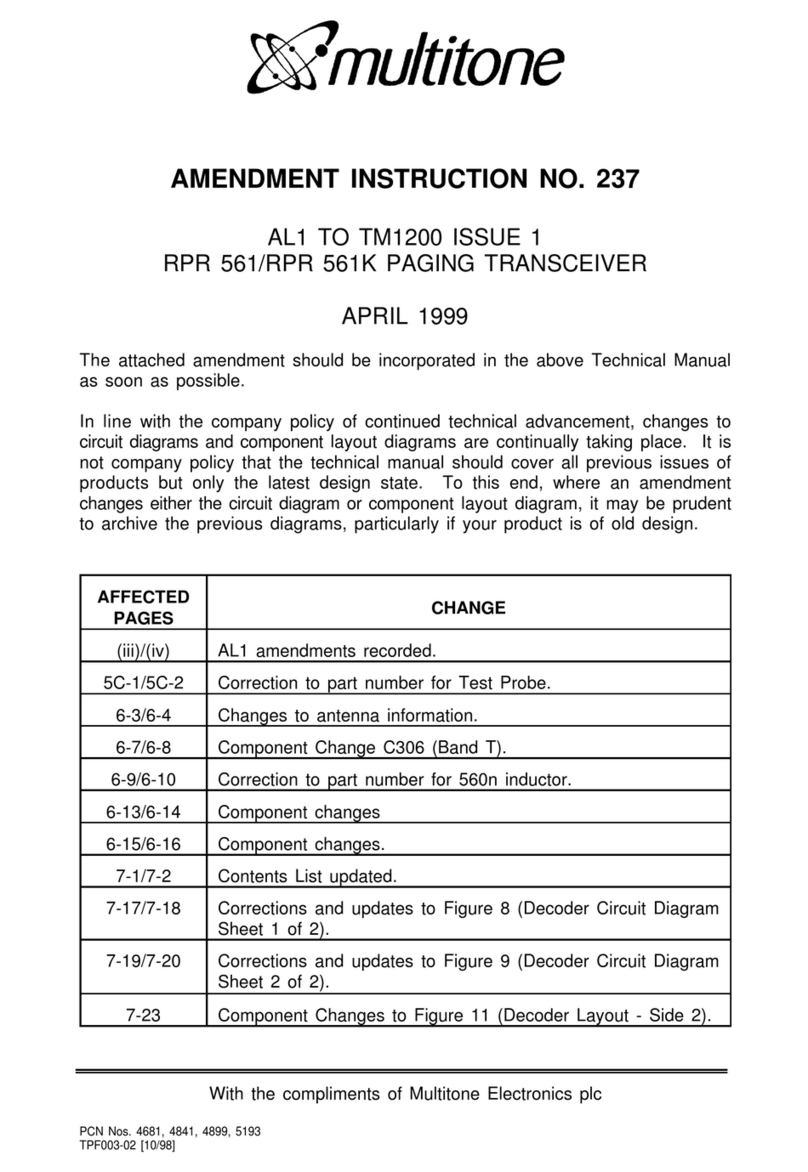Page 1
AMENDMENT INSTRUCTION NO. 236
AL2 TO TM1195 ISSUE 1
RPR 563/RPR 563K PAGING TRANSCEIVER
APRIL 1999
The attached amendment should be incorporated in the above Technical Manual
as soon as possible.
In line with the company policy of continued technical advancement, changes to
circuit diagrams and component layout diagrams are continually taking place. It is
not company policy that the technical manual should cover all previous issues of
productsbut only the latest design state. To this end, where an amendment
changes either the circuit diagram or component layout diagram, it may be prudent
to archive the previous diagrams, particularly if your product is of old design.
AFFECTED
PAGES CHANGE
(iii)/(iv) AL2 amendments recorded.
1-7/1-8 New Rx frequency band and crystal information.
3-3/3-4 To add crystal frequency calculation for Band V.
3-7/3-8 Corrections to paragraphs 27 and 30.
5C-1/5C-2 Correction to part number for Test Probe.
6-1/6-2 Contents List updated. Addition of new frequency band.
6-3/6-4 Change to antenna information.
6-5/6-6 Component Change C306 (Band T).
6-7/6-8 Filter and inductor information for Band V.
6-9/6-10 Correction to part number for 560n inductor.
6-11/6-12 Adds R351 for Band V.
6-15/6-16 Para 24: Alternative part number for Gate Array.
Para 26: Adds Parts List for new Decoder PCB.
6-17/6-18 New pages with Parts List for new Decoder PCB.
7-1/7-2 Contents List updated.




























